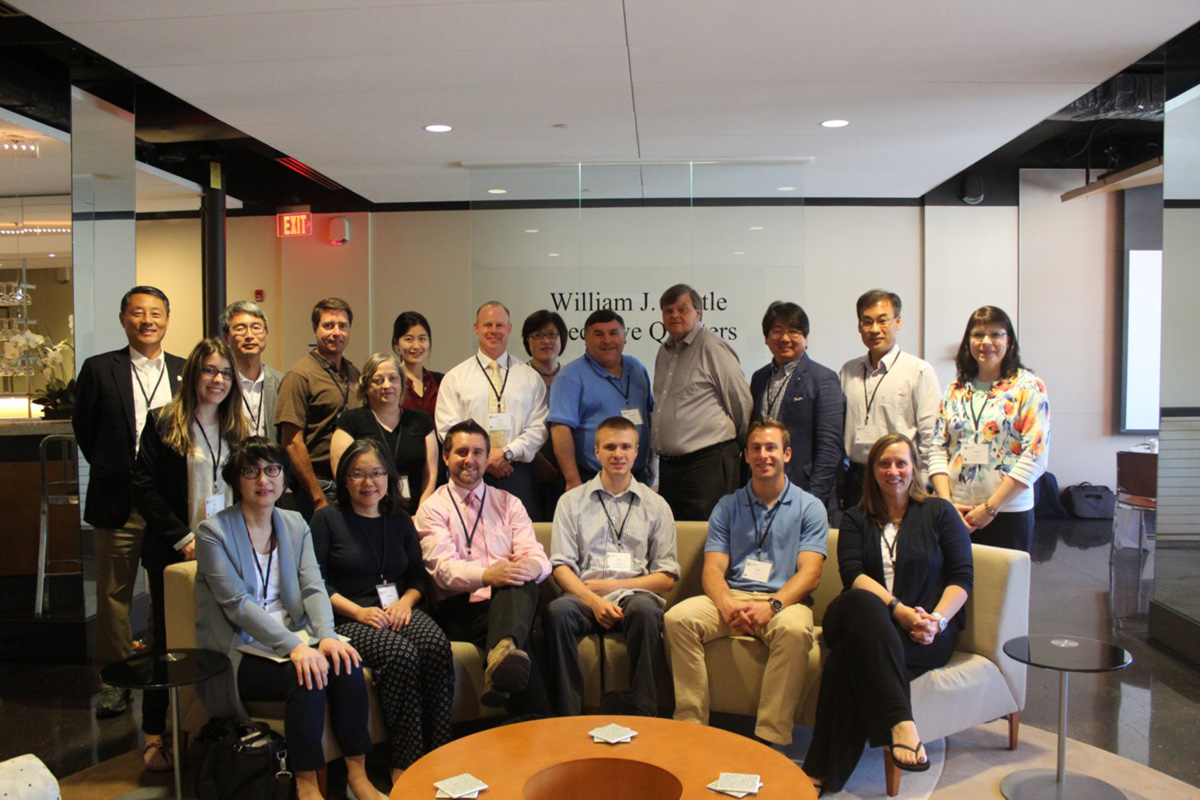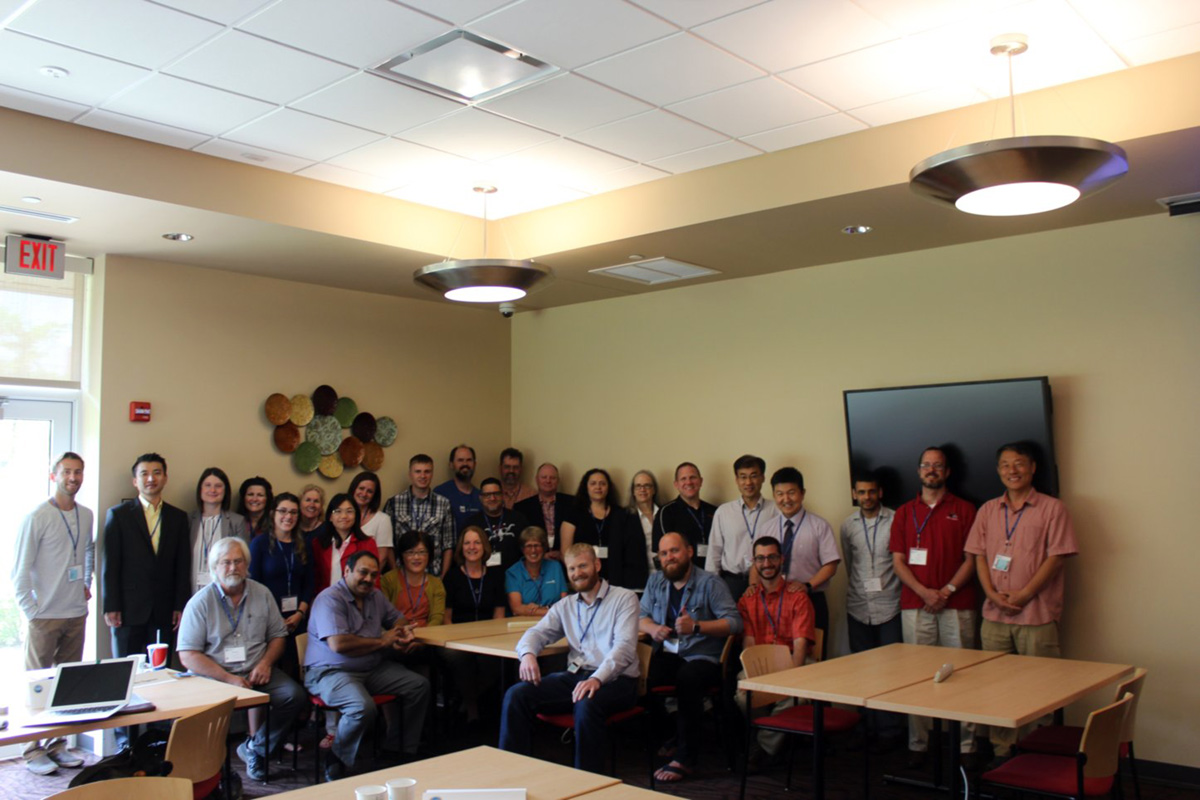Academic Updates
IT Education and Research Directions in American Colleges
I was invited to the following two IT education and research related workshops supported by National Science Foundation (NSF) which was held at Penn State Altoona this summer.
- The 1st Data Science Educators Workshop, Penn State Altoona, June 2-3, 2017. (NSF Award Number: 1525601)
- STEM Education in Virtual Worlds Workshop, Penn State Altoona, July 10-13, 2017. (NSF, Division of Undergraduate Education Award Number: 1650620)
The first Data Science Educators workshop was related with how to teach recent emerging Data Science to the students efficiently. It covered three big topics of NSF project goals and directives, active learning vis Digital Story Telling, and an upcoming learning module which will be released in December 2017. The attendees had the chances of expressing their opinions about the current data Science learning modules and future learning modules and exchanging their opinions each other.
Digital Storytelling is a term describing a new practice of people using ‘digital tools’ to tell their 'story.’ Available media types are digital forms using movie technologies like video with acoustic effects, still, audio, storytelling, or even non-physical media which are used by an individual to present ideas or do storytelling.
The main themes of the workshop were Big Data and Big Data Analytics, Online Course on Big Data Analytics, Machine Learning and Big Data, Big Data Security Problems, and Big Data Jobs. The project was led Penn State Altoona and they worked with other five university members of Big Data Education Community to perform the project and invited the professors of member universities. Thorough research results sharing, collecting their ideas, and gradual adjusting of their research directions to satisfy dynamic industry requirements, they are striving to teach emerging Data Science technologies for their students more efficiently to help them to have promising jobs in Data Science fields after their graduations and performing relevant research collaboratively to achieve their project goals.

Photo Courtesy of Professor Jungwoo Ryoo, Penn State Altoona
The second workshop was related with an efficient teaching of STEM (Science, Technology, Engineering, and Math) courses for the college students more efficiently using digital learning aids in Virtual Learning Environment (VLE) over the Internet.
University professors, researchers of various education and learning research institutes, industry peoples attended the workshop and presented their ideas and joined the discussion. The four-day intensive workshop covered various ideas about the topics of VLEs and Digital Storytelling, VLEs and Digital Publishing, VLEs and Online Education, and VLEs and Digital Badges, Future Trends in VLE Integration respectively to catch up dynamically changing environments of STEM learning in American colleges.
All the attendees stayed at the university dormitory during the whole workshop. They were group as the teams of 3-4 people and were given homework every day. Each group presented their completed homework next day and had a question answering session. The workshop started at 8:30 or 9:0 and ended at 5:00 very intensively.

Photo Courtesy of Professor Jungwoo Ryoo, Penn State Altoona
By attending the above two workshops, I want to summarized what I learned regarding IT Education and Research Directions in American Colleges as the following 10 items.
- Academia and industry are working closely to catch up dynamically changing requirements of IT industry and adjust IT curriculum for efficient teaching for the students.
- Emphasize hands-on lab focused education rather than theory focused teaching. In case of labs, learning based on VLE (Virtual Learning Environment) over the Internet is getting popular because of fast changing computing and network environment like Cloud Computing.
- Design new courses in the areas of Big Data, AI, and Security to catch up recent development trends of IT industry or update the contents of those courses timely.
- The professors are helping their students through diligent academic advising for their better career management.
- Emphasis is given to the students to encourage them to study application oriented realistic research and hands-on labs by integrating their majors with other disciplines.
- New information about the IT program accreditation and various certificates acquisition is supplied to the students and the professors should guide the students and support them.
- The professors should lead a free learning environments by using a technology such as Digital Storytelling which is emphasizing mutual communications and live discussions.
- Emphasize a creativity increasing training rather than simple information acquisition or usage. For this end, the professors can engage the students in undergraduate research or guise the students to write research papers during their course work. Final research results can be presented in the conferences and published at the relevant journals. Especially, the professors can help the undergraduate students to have their own independent research capabilities by offering many research opportunities.
- The professors can encourage the students to join various IT competitions and to become a member of professional IT societies and encouraging them to enjoy various IT club activities in campus.
- Encourage the students to attend an IT expert invitation seminar regularly and helping them to figure out the recent IT trends and offer opportunities to work as interns or get jobs. Also, departmental seminars, weekly or monthly seminars are highly recommended for the students to attend.
To catch up every developing IT industry development trends, American universities are now investing efforts and time continuously and advancing to the future day by day.